What does a digital marketer do?
A digital marketer develops, implements, manages, and measures an organization’s online marketing strategy and campaigns. Many online marketers specialize in different types of digital marketing, like social media, SEO, content marketing,
and PPC.
Generally, digital marketers aim to accomplish their company’s overall goals, like increasing revenue, by achieving smaller goals, like improving the organization’s website traffic, social media following, and conversion rate.
In almost all cases, online marketers will measure the performance of their business’s digital marketing strategy with metrics, also called key performance indicators (KPIs), on a monthly, quarterly, and yearly basis..
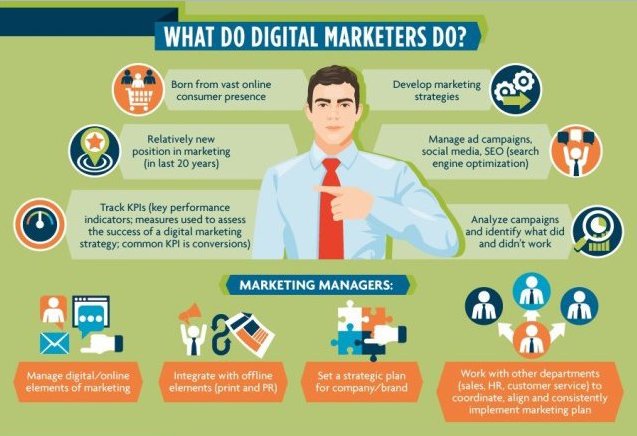
How much does digital marketing cost?
Digital marketing budgets vary. The average small-to-midsized business (SMB), however, spends $2500 to $12,000 per month on Internet marketing. Generally, companies will dedicate 6.5% to 10% of their revenue to online marketing.
If your business earned $1 million in revenue, for example, you would then set aside $65,000 to $100,000 for digital marketing that year. Every company is different, of course, so you may invest more or less in online marketing.
What determines digital marketing costs?
A few factors influence how much you spend on digital marketing, including:
Your online marketing strategy’s complexity
Web marketing plans can become complicated quickly, especially if your company uses multiple channels and teams for marketing your business. That’s why complex projects require a more significant investment because they
need more resources and team members to succeed.
Your digital marketing tools
Marketing your business online demands a toolkit, which will generally include tools for:t
- Tracking rankings in organic search results
- Researching competitor strategies
- Developing content calendars
- Tracking content progress from writing to editing to publishing
- Scheduling, publishing, and monitoring social media posts
- Creating ads for social media and search campaigns
- Building, sending, and monitoring email campaigns
While your company can access some free tools, like Buffer for scheduling social media posts, you’ll often need to set aside some of your digital marketing budget for paid tools, like Ahrefs, for researching competitors and
monitoring organic search rankings.
Depending on your business, you may also invest in some third-party services, like:
- Freelance design
- Professional digital marketing services
- One-time consulting
These services often help your in-house team with managing your online marketing strategy.
A freelance designer, for instance, can provide high-quality graphics for your company’s blog posts, social media posts, and ads, which saves you the time of creating these images yourself. In comparison, a digital
marketing agency can streamline your entire strategy by leading and managing it for you.
Whether you choose to hire help or work in-house will depend on your company and its capabilities.
While large, enterprise-level corporations can often handle their digital marketing campaigns in-house, many SMBs encounter bottlenecks. Not having enough team members, time, or even experience in an area can all bring
your digital marketing efforts to a halt, which is where a third-party provider can help.
Your online marketing strategy’s aggressiveness
Like complex strategies, aggressive online marketing strategies require a more substantial investment. Your business, for example, may invest closer to 10% of your total revenue versus 6.5% to make your plan more competitive.
Whether your company requires an aggressive strategy will depend on your goals, as well as your industry. If you operate in a tough market where everyone uses online marketing, you will probably need an aggressive
plan for promoting your brand.
8 types of digital marketing to know (and how to use them)
Looking to use online marketing to grow your business? Our digital marketing guide tells you what you need to know about eight of the most common digital marketing channels. The types of digital marketing this guide covers
are:
- SEO
- Content Marketing
- PPC
- Social Media Marketing
- Email Marketing
- Social Media Advertising
- Video Marketing
- Web Design & Web Development
SEO
Average investment: $750-$2000 / month
Using SEO as a digital marketing strategy, companies can increase their visibility in search results on Google and other search engines. With a better spot in search results, your business can earn more website traffic,
leads, and sales. Since 93% of online experiences start with a search engine, SEO is a must.
What is SEO?
SEO is an online marketing strategy that improves your visibility or ranking in search results relevant to your business and target market. Increasing your ranking requires on-page SEO and off-page SEO. These two tactics
focus on making your site friendlier and more authoritative to search engines and users.
What are the types of SEO?
When you use SEO as a digital marketing technique, you’ll use a few types of SEO, including:
Technical SEO
Technical SEO is the practice of using coding languages to identify different parts of a page. Most of the time that requires using a coding language like HTML, CSS, Java, JavaScript, PHP, or Schema. Regardless of the languages
you use to create your site, you need to write the code well enough for search engines to read it. You don’t have to be a computer programmer to make simple changes to your site’s code, though. In fact, if you spend some time
doing your research, you can find places online to learn them for free. But regardless of whether you learn the languages yourself, it’s important to remember the three most important HTML “tags” of technical SEO.
Title tag: (title)The name of your page and the blue text that shows up in Google search results.
Headings (h1) The names of individual sections of a page.
Links (a href=””): Links to other pages on your site or pages off your site.
With these three tags, you’ll at least have a start on your technical SEO.
Local SEO
Local SEO is the process of adding your business to online directories and targeting location-based keywords with content on your site. This helps you show up in multiple areas online with your brand name, address, phone number,
and more.
When people look up your business name or industry online, local SEO increases the chances that they’ll find your company before they find your competitors.
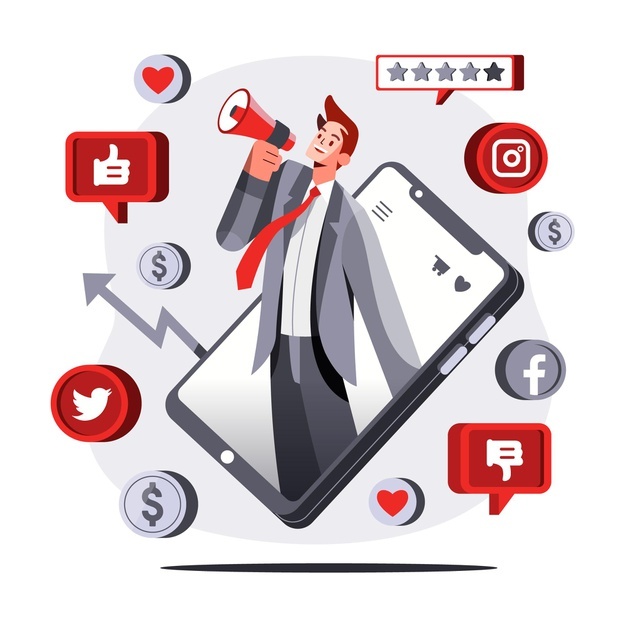
That helps you get more customers, earn more revenue, and grow your business. Best of all, most local SEO outlets are entirely free. The most popular local SEO outlet is Google My Business. It lets you add your company to Google
Search and Maps results, which are two of the most popular online properties in the world.
How to use SEO as a digital marketing technique
When it comes to digital marketing techniques, SEO earns the most recommendations. With SEO, your business can drive long-term revenue to your company, without the upfront and continuous costs that come with strategies like social
media advertising. If you’re ready to use SEO for your online marketing campaign, use these tips.
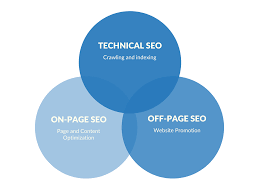
Build your SEO knowledge and learn the basics
An umbrella of strategies make up SEO, which is why it’s essential to master the basics of SEO. Understand which ranking factors, like links and mobile-friendliness, matter the most to search engines. Then, learn how to optimize your website for these
factors, like by investing in a mobile responsive site for mobile-friendliness or developing an outreach and content process for attracting backlinks. Guides, like SEO From Start to Finish, can get you started with SEO.
Audit your website’s SEO
As a part of your SEO strategy for online marketing, audit your website. Use what you learned and apply it to your site. Check your current rankings in search results, for example, with a free tool like Google Search Console. Analyze
your keyword targeting, as well as how you use keywords in your content, title tags, and meta descriptions. If you want to audit your site fast, use a free SEO checker. You can even invest in professional SEO audit services
if you want the help of seasoned SEOs. This option works well if you’ve practiced SEO before but can’t figure out why your company isn’t ranking well in search results. Once you finish your audit, you can move on to optimizing
your site
Research your keywords
Keyword research is the process of identifying valuable words and phrases that your customers use to find your business online. It’s the first step to almost every digital marketing strategy because it forms the foundation of each
one. To find keywords related to your business, you have a few research options at your disposal:.
Google Autosuggest
While it’s not an official keyword research tool, Google has a built-in keyword research tool right in Google Search.
All you have to do is start typing a word related to your business — like “shoes” if you sell running shoes or “garage door repair” if you’re a garage door company — and see what pops up. The suggested keywords will be listed
in order of popularity based on how many people search them. Unfortunately, that means this keyword research strategy has a limited success ceiling. It won’t be able to tell you everything you need to know to create your
plan, but it will give you a good place to start.
Keywordtool.io
Keywordtool.io is a great way to generate long lists of keyword ideas. All you have to do is type in the root of your keyword — so again, something like “shoes” if you sell running shoes — and Keywordtool.io will generate a list of
possible keywords for you to target.
Unfortunately, this tool doesn’t tell you how frequently people search for those keywords. So you’ll have to take your list and use it in another tool to get the full picture of keywords you should target. Fortunately, there are plenty
of tools to accomplish this task.
SEMrush
SEMrush is a paid SEO tool.
Most companies can research keywords with the cheapest SEMrush package, though you can upgrade to get more of SEMrush’s functionality.

With SEMrush, you can upload a spreadsheet of the keywords you find with tools like Keywordtool.io and get data, like how many people search for those keywords every month, current websites that rank for those keywords, and other information
that can help you decide what keywords work best for your needs. Ideally, you want to find long-tail keywords or phrases of four to five words. They may have low search volume, but they’ll also typically have lower competition.
Better yet, they’ll drive qualified traffic to your business because long search queries imply a searcher’s intent to make a purchase. The idea is to target these keywords with future strategies so you can pull a consistent audience
to your website.
Maintain your SEO
Once you’ve achieved your goals for rankings, website traffic, conversions, and other digital marketing metrics, you must maintain your site so you can keep growing in the future. After all, digital marketing is continuously changing
— and if you don’t keep up, your competitors could leave you in the dust. With that in mind, you (or a digital marketing agency) have to keep up with recent trends, updates to SEO, and other factors that impact your ability to
compete in the digital marketplace. Once you’ve laid the foundation of your SEO strategy, maintaining it is typically much easier. In fact, it’ll be more time-consuming than difficult, as you’ll have to update tags, add content,
remove content, test calls-to-action (CTAs), and other factors. But some maintenance jobs are tediously difficult and knowledge-intensive. The best example of this is adapting to algorithm updates, like “Mobilegeddon” of 2015.
This required website owners to incorporate responsive design into their websites, which we’ll discuss in more detail later. This wasn’t a big problem for most companies with SEO partners. But for some smaller businesses, it destroyed
their ability to rank online. These updates mean that every company needs to stay on top of their site and work to maintain their rankings online, even after they’ve achieved their goals.
How much does SEO cost?
How much you invest in SEO will depend on your needs, goals, and project scope.
The average SMB invests $750 to $2000 into SEO each month. In comparison, hourly consultants cost around $80 to $200 per hour. If you’re looking to do a one-time project for your website’s SEO, plan to spend anywhere from
$5000 to $30,000.
Content Marketing
Average investment: $2000-$10,000 / month
Content marketing offers companies a cost-effective and long-term strategy for reaching, nurturing, and converting their target audience, as well as supporting their SEO strategy. With original, high-quality content, your business can generate 54% more
leads, plus appeal to the preferences of 70% of consumers who want to learn about your company through blog posts, guides, and articles.
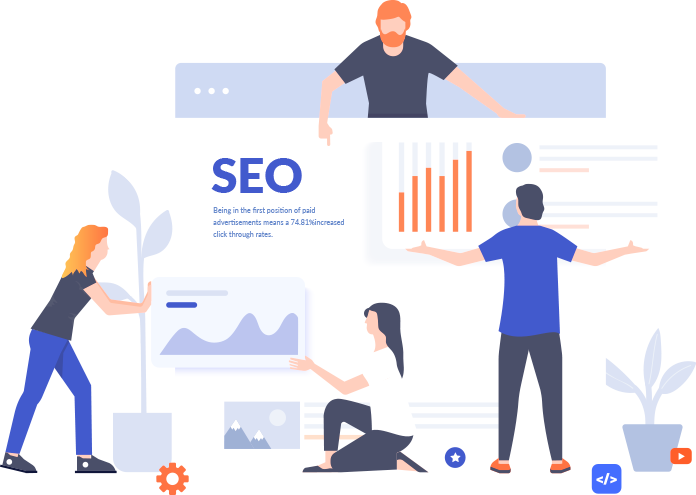
What is content marketing?
Content marketing is a digital marketing technique that focuses on creating original and helpful content for users. In most cases, this content, which can range from blog posts to videos to online guides, will get optimized for search,
shared on social media, and promoted to increase its reach and exposure.
What types of content can you create?
If you use content marketing, you can get creative and create a range of content types, including:
Blogs
Blogging is the most popular form of content on the Internet. Thanks to platforms like WordPress, anyone can run a blog for practically no investment. Blogs help build your brand, reputation, and authority online. You can use your
blog to post regular updates about timely issues in your industry. For an online shoe retailer, for example, that could be something like how someone can size their feet at home, how arch support works, and why some brands are
more expensive than others.
In comparison, an orthopedic marketing campaign may post about different treatments and therapies, as well as weighing different treatment options. Their blog posts could answer common questions for people receiving or researching
orthopedic care. By giving that information away for free, you answer your potential customers’ questions. That brings them to your site, educates them, showcases your knowledge, and improves the chances that they’ll want to buy
from you in the future. Writing and publishing blog posts on a regular schedule also gives your readers a reason to come back to your site. On top of that, it encourages search engines like Google to crawl your site more frequently
so your newest pages show up in search results. Blogging is an easy, effective, and powerful way to build your brand online. As a result, it’s often the first content marketing strategy most companies adopt online.
Articles
Article pages are evergreen pages on your site that you can use for a variety of purposes. Most of the time, these pages are used for:
1.Service pricing: Service pricing pages are helpful because they show potential customers how much you charge for different tiers of service. This is especially useful for B2B sales.
Product information: Product information pages are great for ecommerce sales because they give your customers all the information they need to make an informed purchase.
Ecommerce category listing: Ecommerce category listings help collect similar products into categories, where customers can browse for what they want.
Some companies also use this format for FAQ pages, which is a great way to answer a lot of common questions all at the same time.
Aside from these options, you can also use article pages to target long-tail keywords that can continually pay dividends long after you publish them.
That evergreen content pairs well with blog posts to make a robust, well-rounded content strategy. By using both approaches together, you can target a variety of keywords and drive traffic to your site day after day.
Infographics
Infographics are visual representations of information that make a compelling point with hard data. Infographics are ideal for explaining complex concepts in simple terms. They don’t need to be anything fancy, either — some of the
best infographics are lists of data points with charts and graphs.
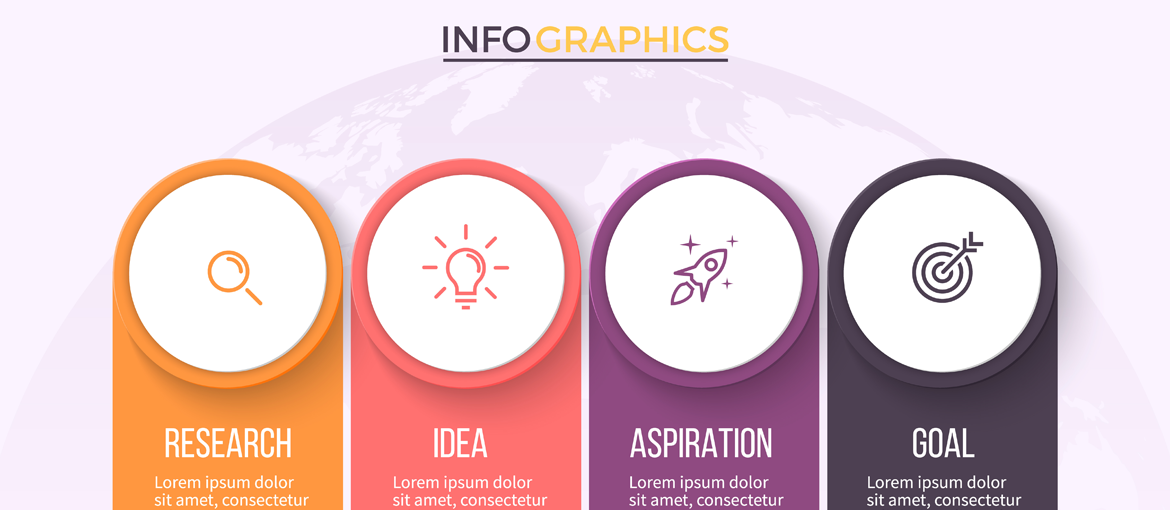
If you need infographic ideas, think about how you could best represent your products or services through data. That could be sales trends in your industry by year, the popularity of certain products, the impact of different innovations,
and more. Then, once it’s on your site, you can promote it on social media and earn backlinks for it, both of which help spread the word about your brand.
Video
Video is another excellent content medium that presents information in an engaging, efficient, and user-friendly way. Plus, Google likes to see videos on pages since they provide a great user experience. Your business can use videos
to improve your rankings in search results, attract more traffic to your website, and provide a quality experience to your users. That shows everyone — including Google — that you’re an authoritative source on your industry, and
that kind of reputation goes a long way online.
Podcasts
Podcasts are episodic audio content that allow you to discuss issues in your industry. You can make a podcast for about $100, and it comes with a whole host of SEO benefits. Podcasts let you showcase your expertise by discussing current
industry topics, offering advice, or even making predictions about your industry’s future.
You can even use it as a source of revenue if you’d like to sell ad space. While that’s not common for business podcasts, it’s still a possibility.
More commonly, podcasts are used to interview influencers or discuss trends among coworkers. That keeps the format simple, easy-to-follow, and enjoyable.
You can also post your podcasts to networks like iTunes and enjoy search saturation as a result of your work.
Plus, podcasting is the only form of content that doesn’t require your audience to stare at a screen. Your listeners can enjoy your podcast in the car, on a walk, or while doing chores around the house.
How to use content marketing as a digital marketing technique?
Use content marketing as a digital marketing technique with these tips:
Write for readers, then search engines
Content marketing and SEO work together, which is why content marketing often includes SEO. When optimizing your content for SEO, however, you want to avoid over-optimizing it. Instead, focus on writing for your audience first, and then writing for search
engines. Avoid keyword stuffing, for example, which can harm your user experience and rankings.
Add helpful visuals
Visuals can help your business deliver an unparalleled user experience.
Videos, infographics, custom graphics, and more can all help users follow along with your content and get answers to their questions. Add this kind of multimedia to your content to create a better user experience, which can help
improve your rankings in search results and shares on social media.
Conduct outreach to promote your content
Outreach is the process of creating great content on your site and sending it to other website owners to earn a backlink.
This is similar to influencer marketing, but the goal of outreach isn’t to gain credibility or social clout — it’s to improve your SEO.
Outreach works best over email. You can send someone a short message that asks them to look at your content, repost it on their site, and link back to your website for credit.
This is important because backlinks play a huge role in SEO. When you have a lot of backlinks from high-quality websites, Google sees those backlinks as votes of confidence.
Google will then rank your site better in search results, which will help you attract more traffic and customers to your website from organic search results..
How much does content marketing cost?
Generally, SMBs will invest $2000 to $10,000 per month into content marketing. How much you dedicate to your content marketing strategy will depend on your plan, as well as its aggressiveness and whether you outsource tasks like
writing, editing, and design.
Learn more about using content marketing for digital marketing
Get more information about using content marketing for your digital marketing strategy now:
- Content Marketing [Guide]
- How to Create a Content Marketing Strategy
- How Much Does Content Marketing Cost?
- Content Marketing Services
- Content Marketing Resource Library
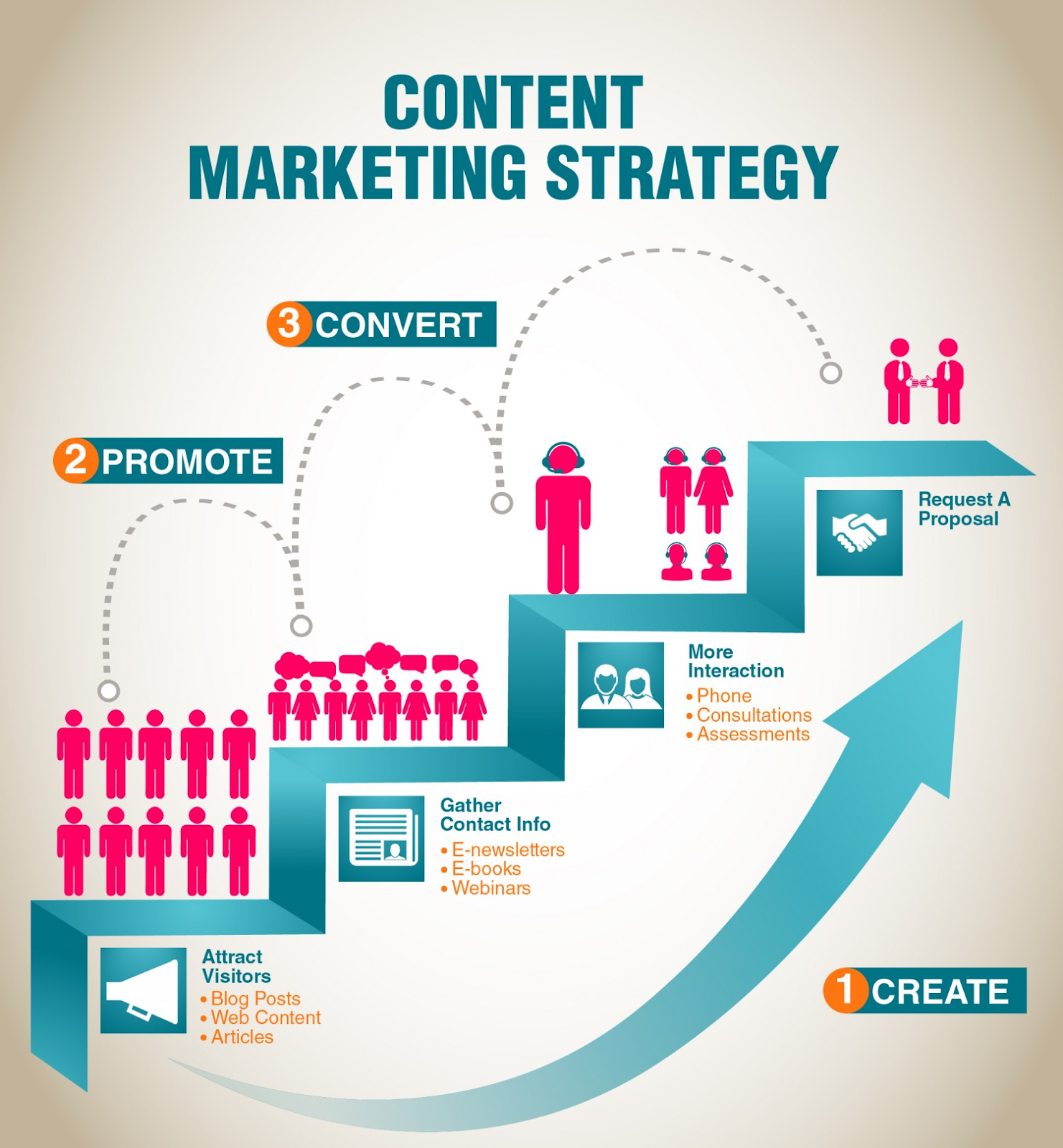
PPC Advertising
Over 60% of SMBs use PPC because it’s a fast and effective digital marketing technique for generating leads and sales. With PPC, your business can create a hyper-targeted campaign to reach ready-to-buy users in your target audience,
which is one reason why PPC boasts an average ROI of $2 for every $1 spent.
What is PPC advertising?
PPC advertising is a digital media marketing tactic that promotes your business, products, or services on search engines, websites, apps, and more. PPC operates on a pay-per-click business model, which means you only pay when someone
clicks on your ad, which can include text, images, and video..
Where can you use PPC advertising?
You can advertise your business, products, and services with several platforms, including these two:
Search engines
When you advertise with search engines like Google and Bing, you can assign ads to certain keywords. Then, you place a “bid” for how much you’re willing to pay for each click to your website, and the advertisers with the highest
bids show up above the other search results. This means when you outbid your competitors, your ad shows up directly underneath the search bar — right where search users look after a page loads.
The idea is that more people will click your ad when you rank higher. On the one hand, that means you’ll pay more by “buying” more ad clicks. On the other hand, it means you’ll have lots of opportunities to convert ad clicks into
paying customers. In some cases, it only takes one or two conversions to recoup your cost and turn a profit on your PPC campaign. So, once you determine the keywords that generate results for your business, you can use PPC
to maximize your visibility and generate more qualified traffic.
Social media
Social platforms often let you choose between a cost-per-thousand-impressions (CPM) and CPC payment model. That makes social ads more versatile than search ads, but social networks — even the big ones — don’t get as much daily
traffic as Google. However, social ads allow you to incorporate images, GIFs, and videos into your ads, so you don’t have to rely on text to get new customers. Many social networks still have rules regarding their ads, though.
For example, Facebook doesn’t allow any images to have more than 20% text.
Other networks, like Twitter or Pinterest, are more accepting of different ad formats. With social ads, you have so many choices that it’ll take some time to find the most effective network for your needs.
How to use PPC advertising as a digital marketing technique
Are you ready to use this digital marketing technique? Get started with these PPC tips:
1.Start with broad targeting
While you can create hyper-targeted campaigns with PPC, you want to avoid launching campaigns with this much targeting. Instead, keep your targeting broad at the start and then use your data (versus your hunches) to refine your
campaign.
2.Optimize landing pages
Landing pages play a critical part in PPC. If you have a slow, difficult-to-navigate, or irrelevant landing page, it will hurt the performance of your PPC campaigns. You’ll experience higher costs and lower CTRs. Plus, ad networks
will show your ad less because they know it underdelivers when it comes to user experience. Optimize your landing pages for users by coordinating your landing page with your ad. For example, if you advertise a pair of running
shoes, your landing page should be the product page for those running shoes — not your running shoes category page. You can also improve your landing page by improving its usability and speed.
3.Use responsive ads
Responsive ads offer your business a convenient way to test your ad headlines and descriptions. With Google responsive ads, for example, Google will test different combinations of your headlines and descriptions to see which ones
perform best. You can also use responsive display ads, which will also experiment with image and video combinations.
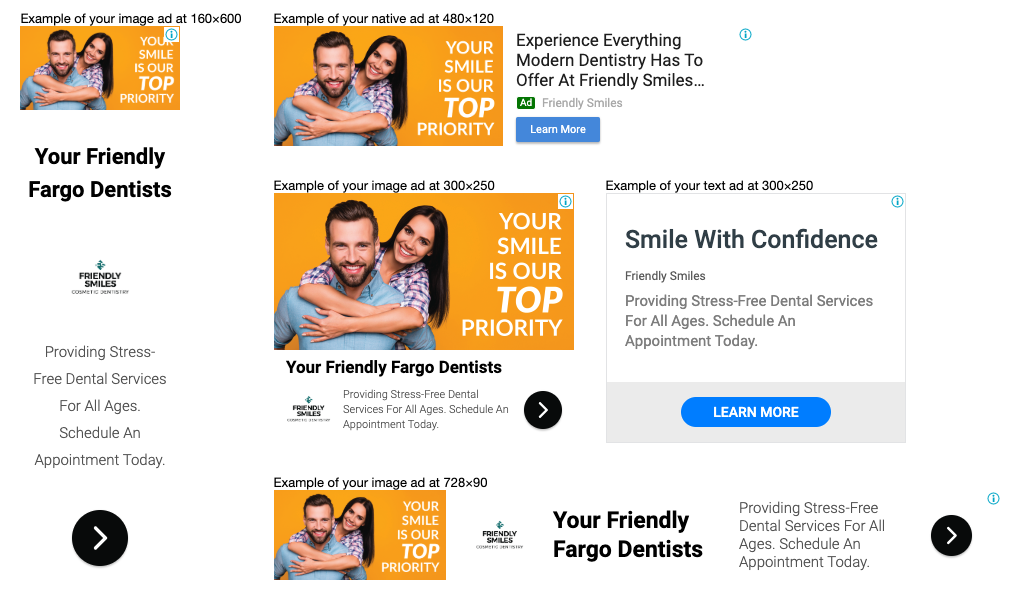
If you use responsive ads, make sure the various combinations make sense. Having a headline and description that say the same thing, for example, will naturally fail, which doesn’t help your business maximize the performance of
your ads or the value of responsive ads.
How much does PPC advertising cost?
On average, SMBs invest $9000 to $10,000 per month into PPC advertising. How much you invest in PPC will depend on your industry, strategy, ad network, and aggressiveness. Your PPC investment may also change over time, like if
your business is seasonal.
Social Media Marketing
Average investment: $4000-$7000 / month
Almost 75% of people use social media when making a purchase decision, which makes social media marketing a must-use digital marketing technique. With social media marketing, companies can build a loyal following, as well as engage
and interact with their followers to improve customer loyalty, increase sales, and reduce churn.
What is social media marketing?
Social media marketing is a type of digital marketing strategy that uses social media networks to promote your business, engage your target audience, and provide your customers with one-on-one support. Most approaches include sharing
content, answering comments, and promoting posts.
What social networks should you use for social media marketing?
You have choices when it comes to social networks for your digital marketing strategy:
Facebook
Facebook is the world’s most popular social network, with more than one billion users. That means there are guaranteed to be a few possible customers on Facebook for your business, even if you only operate a single storefront in
a small town. Facebook lets you set up a business page for free, which you can optimize quickly with your business name, hours of operation, address, phone number, and more. In that regard, Facebook helps with your local SEO
strategy, too! Once you have everything set up, you can post updates to Facebook that include content from your site, contests for followers, and more.
Instagram
Instagram is another popular social media network for businesses. With Instagram, you can engage users with eye-catching images and videos, as well as limited-time Instagram Stories. Plus, you can upload product or service images,
which you can tag as shoppable products, making it easy for users to go from browsing social media to buying your products.
Twitter
Twitter is one of the largest social networks and limits its users to 280-character updates, called tweets.
Twitter is another place where you can post your brand name, images, and the city of your headquarters. It also lets you quickly gain followers by tweeting links to content, exciting stories, industry news, and more.
This social media network is also a customer service medium. This is more common for larger businesses, but its format makes it easy for customers to reach out to the companies they buy from.
When you address their questions or concerns professionally, Twitter can become a powerful medium to improve your company’s reputation and serve your customers.
Pinterest
Pinterest is one of the Internet’s most popular social networks, especially for images, DIY ideas, and crafts. That may not sound like it’s ideal for every business, but it’s helpful for every industry — including B2Bs. Pinterest
lets you share images of your team, the results of your work, and how your products work, among other opportunities. This allows you to inform your customer base more effectively than you could with text alone. This is the
same principle behind infographics and videos, which is why Pinterest is such an effective social network for marketing.
Pinterest
Pinterest is one of the Internet’s most popular social networks, especially for images, DIY ideas, and crafts. That may not sound like it’s ideal for every business, but it’s helpful for every industry — including B2Bs.
Pinterest lets you share images of your team, the results of your work, and how your products work, among other opportunities. This allows you to inform your customer base more effectively than you could with text alone.
This is the same principle behind infographics and videos, which is why Pinterest is such an effective social network for marketing.
LinkedIn
LinkedIn is the world’s largest professional social network. It’s one of the most crucial online meeting places for professionals, from new graduates to Fortune 500 CEOs.
When you use it for marketing by posting links to your site and participating in discussions, you show that you’re a part of a quality business that strives for excellence.
Creating a business page allows you to list essential information about your company in yet another location online, and it lets people follow you to get updates about your business.
The most powerful part of LinkedIn is its professional context. Since its users are there for professional purposes, you can use it to establish new business relationships, promote your company to potential customers,
and more.
Snapchat
Snapchat is one of the newest ways to promote your business online. Snapchat is exceptionally popular with young smartphone enthusiasts, which is a growing demographic with more spending money by the day. You can use the app to
send or post photos and videos to attract new followers to your account. Snapchat’s primary purpose is to connect with followers through humor or entertainment.
This is easier to do for more laid-back brands than it is for professional brands, so it’s up to you whether Snapchat is worth testing. But if you do, you have the potential to engage with millions of users and grow your
brand awareness every day.
How to use social media marketing as a digital marketing technique
Start using this digital marketing technique with these tips:
Use your audience’s favorite platforms
While it’s helpful to create a business page on every social media platform, you want to focus your social media marketing efforts on the networks that your audience uses the most. If your audience doesn’t use Twitter, for example,
don’t dedicate a lot of time to that platform. In most cases, almost every business will benefit from having a Facebook account. Other networks, however, like Instagram, Twitter, and Pinterest, will require you to research
your audience and how they spend their time online.
Optimize your social media profiles
An optimized, professional social media profile can make an excellent first impression.
You want people to visit your page and see that you’re a trustworthy company. Make that happen by uploading a high-quality profile picture and cover photo — if applicable. In most cases, companies will use their logo as
their profile picture, which works well for building brand awareness.
If you need help with creating a professional-level profile, invest in social media design services.
Spice up the content you share
Social media is an excellent platform for sharing content about you, but that doesn’t mean you always should. As a business, you want your social media content to offer value to users. That value can take the form of a helpful
blog post, funny photo, or poll.
Resist the urge to always post about your business and your products or services. Instead, brainstorm ways to capture your audience’s attention as they scroll their newsfeed.
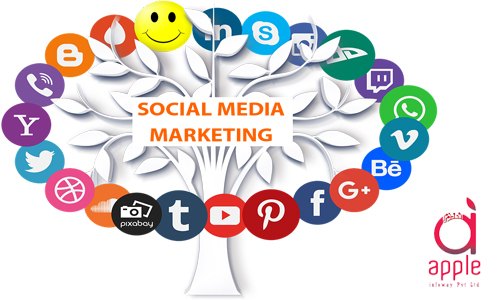
A funny photo, client testimonial, or timely post about a seasonal sale, for instance, may get them to like and comment, as well as visit your store or site. In comparison, a slew of posts about your services or products may earn
an unfollow.
How much does social media marketing cost?
Companies using social media marketing as a digital marketing technique typically invest $4000 to $7000 per month. Like other online marketing strategies, your investment will depend on your plan, as well as how many networks you
use.
Email Marketing
Average investment: $9-$1000 / month
Email marketing is one of the most powerful types of digital marketing a company can use. On average, businesses earn $44 for every $1 they invest in email marketing, demonstrating the usefulness of email marketing as a lead nurturing
tactic. Email marketing also works well with strategies like content marketing and video marketing.
What is email marketing?
Email marketing is a digital marketing technique that focuses on generating and nurturing leads. With email marketing, businesses can send a range of emails, including to promote products, share company announcements, and pass
along helpful advice or articles.
What types of emails can you send?
You can create a range of emails for digital marketing, including:
Newsletters
Newsletters are emails that go out to a large list and provide general information on your company or industry. So, if someone wants to keep up with your business, they’d subscribe to a newsletter. This is ideal for people in your
industry who want to know what you’re doing, and it allows your business to show the public that you’re an authoritative resource in your sector.
Newsletters accomplish that by going out at regular intervals, like every week. They showcase important information, like new hires or other company news.
In fact, you could have a newsletter dedicated to curated industry news from around the Internet. Then, you don’t just prove you’re an authority — you prove you’re helpful and informed, too!
Lead nurturing
Lead nurturing is the process of converting leads into paying customers by sending them additional information based on where they converted on your site.
This kind of marketing requires a lot of in-depth thought, testing, and revision to work. But once it does work, any lead-based business can earn new customers (and more revenue) much more quickly than before.
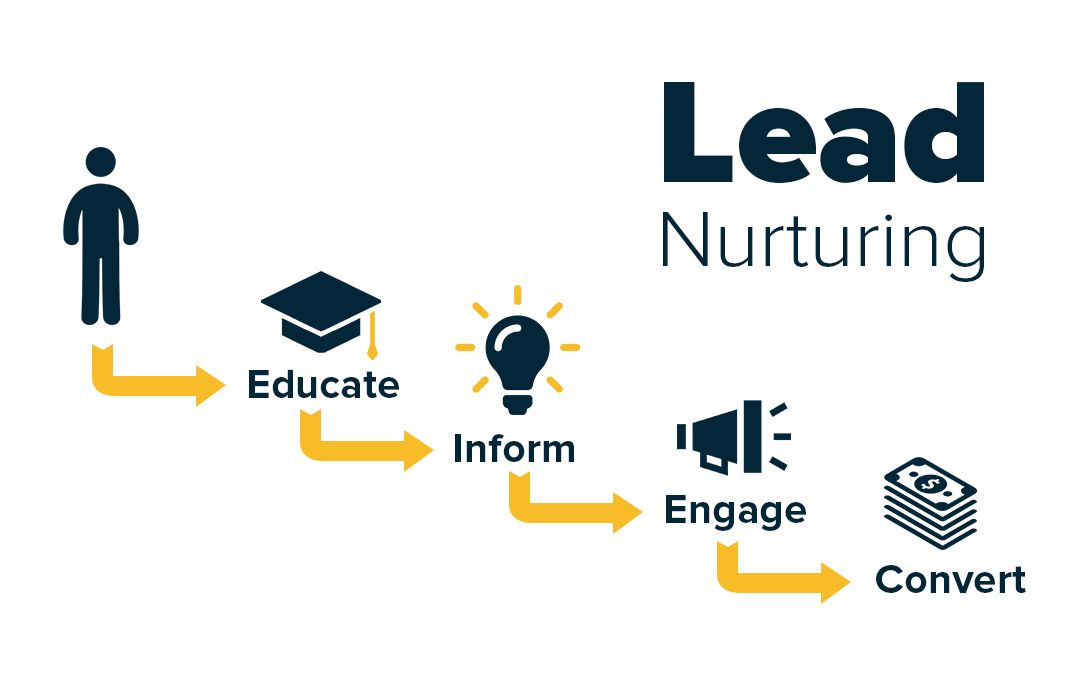
So, let’s say you sell industrial equipment to construction companies. A new user converts into a lead and gives you their contact information. They converted on a page about bulk movers. Another user converts on a page about backhoes.
While these machines fall under the same category — construction equipment — they’re used for different purposes. That means the company that’s interested in bulk movers won’t want the same information as a backhoe. By
sending them different emails that are tailored to their specific needs, which you can also automate, you increase the odds that one of those leads will convert into a paying customer.
How to use email marketing as a digital marketing technique
Make the most of this digital marketing technique with these tips:
Create segmented audiences
Segmenting your emails can result in a 760% increase in revenue. With segmentation, you break your subscribers into dedicated audiences. You base these audiences on subscriber interests, actions, locations, and more. Either way,
when you segment your subscribers, you make it possible to provide them with more personalized and relevant emails.
Use A/B testing
Testing is a valuable tool in digital marketing. With regular experimenting, you can discover new insights about your audience, like a can’t-resist CTA, which can enhance your entire digital marketing strategy and its results.
Adopt an “always be testing” attitude for your email marketing strategy, and test elements like:
- Subject lines
- Email content
- Send times
- And more
With regular testing, your company can build a list of actionable takeaways, which you can apply to not only your email marketing strategy but also your overall digital marketing strategy to supercharge your results.
Personalize emails
Personalization works well for this digital marketing technique.
On average, for example, personalization increases email open rates by over 40%. Even better, personalizing emails can boost conversions by 10%, which translates to more leads and purchases for your business. You can personalize
emails with a subscriber’s name, purchase history, shopping cart, and more.
How much does email marketing cost?
Most businesses invest $9 to $1000 per month into email marketing. Your email marketing costs will depend on a few different factors, including your number of subscribers, sending frequency, and overall strategy.
Social Media Advertising
Average investment: $6000-$10,500 / month
With the decreased visibility of business account posts due to social media algorithm updates, social media advertising is becoming an essential digital marketing technique. Using social media ads, your company can reach its target
market, build its online following, and generate valuable sales and leads.
What is social media advertising?
Social media advertising is a digital media marketing tactic that promotes your business, products, services, or social media page on social networks like Facebook, Twitter, Instagram, and LinkedIn. Ads on social media can include
text, images, videos, and more..
How to use social media advertising as a digital marketing technique
Are you looking to use this digital marketing technique? Here are a few tips for getting started:
Advertise on the platforms with the best ROI
Your company may have a presence and page on every social media platform. That doesn’t mean you should advertise on every single social media network, though. Instead, you should dedicate your ad spend to the most profitable platforms.
For example, if Facebook drives consistent conversions for your business, then it makes sense to continue advertising on that network. If you advertise on Twitter, however, and fail to get any results, then stop. Pause
those campaigns and redirect that ad spend to the platforms that deliver.
Use remarketing
Remarketing is an excellent tactic for social media advertising. With remarketing, you get a second chance to reach your audience and convince them to act, whether by following your social media page, browsing your products, or
purchasing your items. These ads are super effective, too, as people who see retargeted ads are 70% more likely to convert.
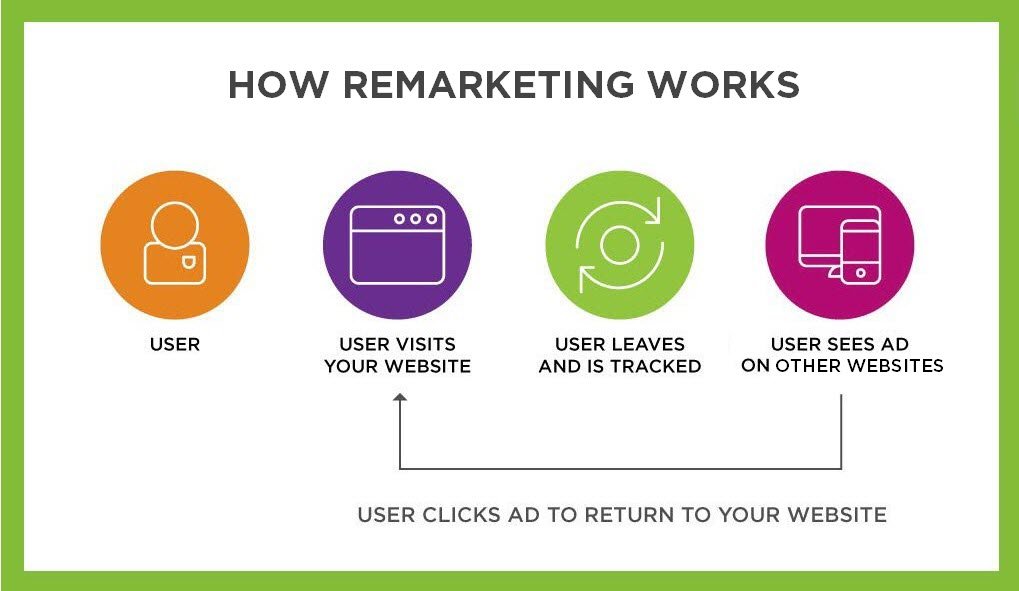
Make visuals a priority
Almost every social media network thrives on visuals. While you can use text-based ads, visual ads can help you achieve better results with social media advertising. For example, you can use image, video, and image carousel ads
on networks like Facebook, LinkedIn, and Instagram to grab your audience’s attention and engagement..
If you do use image or video ads on social media, make sure your creatives match your brand and the aesthetic of the network. Instagram, for example, has a different aesthetic than LinkedIn and even Facebook.
How much does social media advertising cost?
The average SMB invests $6000 to $10,500 per month into social media advertising. How much your company invests, however, will depend on your strategy, industry, ad campaign, social media network, and aggressiveness.
email marketing. Your email marketing costs will depend on a few different factors, including your number of subscribers, sending frequency, and overall strategy.
Video Marketing
Average investment: $6000-$10,500 / month
With 90% of users crediting video for helping them make a purchase decision, video marketing is a valuable digital marketing technique for businesses. Using video, your company can capture the attention of your target market, as
well as move them from the top of the funnel to the bottom. Plus, you can integrate video into other online marketing strategies, like email and content marketing.
What is video marketing?
Video marketing is a digital media marketing tactic that uses video to attract, engage, educate, and persuade users. Companies can use video marketing on their website, as well as video hosting sites like YouTube. Video types range
from product showcases to vlogs to how-tos to testimonials..
How to use video marketing as a digital marketing technique
You can get started with video marketing as a digital marketing technique with these tips:
Optimize for SEO
For the best results with video marketing, optimize your videos for SEO.
If you’re uploading your videos to YouTube, for instance, you’ll want to follow SEO best practices for YouTube. These best practices include using your targeted keyword in your video title, adding relevant video tags,
and creating custom thumbnails.
You can also use YouTube SEO services to get your video content optimized and ranking on YouTube.
Focus on content quality, not video quality
A lot of companies hesitate about video marketing because they think they need a blockbuster-level video. That’s not the case with this digital media marketing tactic. People respond well to homemade videos, even from companies..
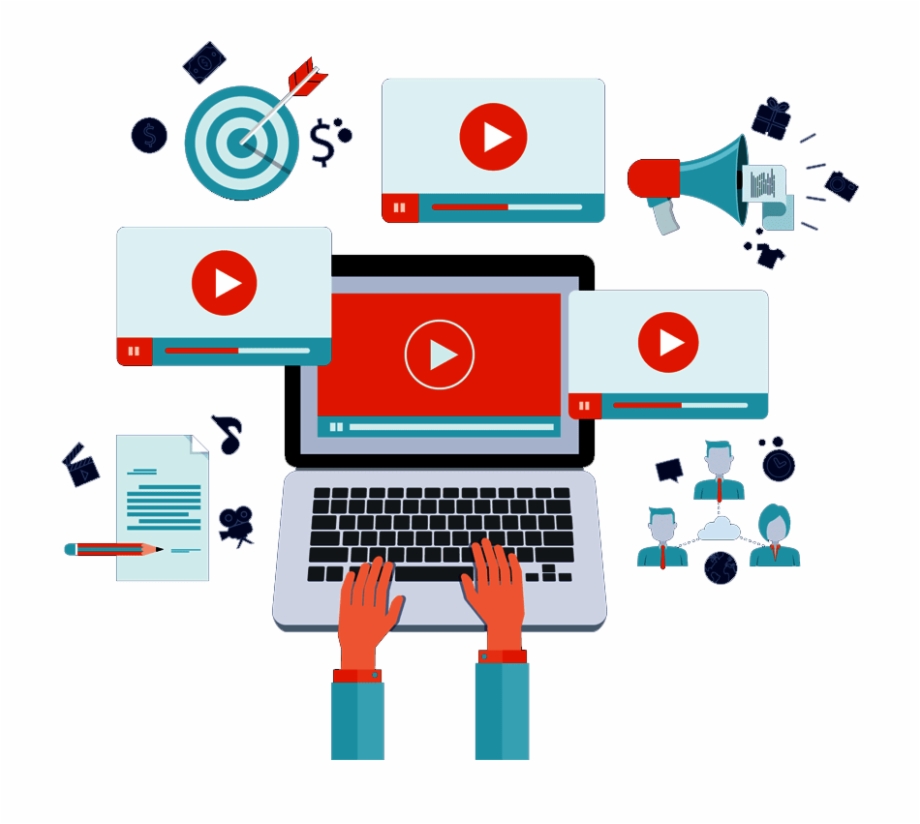
With the quality of smartphone cameras, it’s also easy for your business to get started with video marketing. You don’t have to purchase a video camera. Instead, you can use your smartphone to shoot your first video, whether it’s
a clip showing off your product or answering your most common questions. Overall, focus on the quality of your content.
Make sure your video provides value to your audience, like by responding to questions without getting sidetracked. When you post valuable content, it will build your audience’s trust and respect, as well as interest and
enthusiasm in sharing your videos.
Use a script
For the best results with this digital marketing technique, create a video script or outline.
You don’t have to write what you will say word-for-word. Outlining what topics or questions you want to cover, however, can keep your videos focused. A focused video can prevent viewers from getting bored, as well as maximize
the value of your content.
How much does video marketing cost?
Video marketing costs depend on several factors, including video quality, duration, and scope. On average, however, professional video marketing services cost $1200 to $50,000 per video. For the most accurate pricing, request a
quote for your project.
Web Design and Development
Average investment: $12,000-$150,000 / website design, $400-$60,000 / year for maintenance
Your website’s design and development serve as your digital marketing strategy’s foundation. An attractive, functional, and mobile-friendly site helps your business maximize the results of its SEO, PPC, and other online marketing
techniques.
What are web design and web development?
Web design and web development refer to the design and development of your website — its frontend and its backend. While web design focuses on the look of your site, web development focuses on the functionality, usability, and
speed of your website. Both matter to digital media marketing.
How to use web design and web development as a digital marketing technique
If you want to use web design and web development for digital marketing, follow these best practices:
Use responsive design
Today, modern websites use responsive design, which makes them work seamlessly on desktop computers, smartphones, and every device in between. Your site needs a responsive design, as 50% of the world’s Internet traffic comes from
mobile devices.
If you don’t use a responsive design, your hurt several other digital marketing techniques, like SEO. That’s because search engines like Google don’t like sites that aren’t mobile-friendly. Those websites deliver a poor
user experience, so Google doesn’t rank them as high in search results.
Ensure site functionality
Proper web development ensures every part of your site works the way you intend it to work, whether that means links taking people to the right pages, setting up a sitemap for Google to read, or any other back-end quality that
improves your website.
A site with poor functionality ruins the user experience. If your website delivers a poor user experience, whether due to broken links, tools, or navigation bars, it will lower your online conversions, sales, and revenue.
Lackluster user experiences also harm another critical digital marketing technique: SEO.
Search engines won’t send users to difficult-to-use websites. They know, from measuring user behavior metrics like time on page and bounce rate, that these sites deliver a poor user experience. In response, search engines
will lower the rankings of these websites.
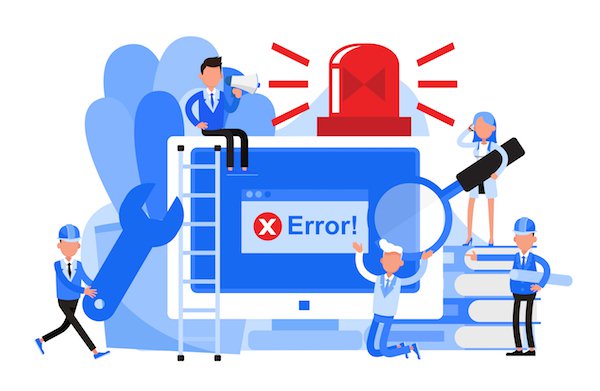
Maximize page speed
Page speed is also critical to online marketing.
People won’t wait around for your site to load. Studies show that more than 50% of users will abandon a website that takes more than three seconds to load. That translates to lost leads and sales for your business, which
you don’t want.
Improve your site’s page speed by taking actions like:
- Compressing images
- Reducing redirects
- Minifying HTML, JavaScript, and CSS
You can check your page speed now with Google’s free tool, PageSpeed Insights.
How much does web design and web development cost?
Web design and web development costs include upfront and routine costs. The average investment for designing, building, and launching a website, for example, ranges from $12,000 to $150,000. In comparison, the cost of maintaining
your site ranges from $400 to $60,000 annually.
How to create a digital marketing strategy
Every discussion on digital marketing basics should cover how to do digital marketing — or how to create an online marketing strategy.
Even if you plan to outsource your online marketing by partnering with an Internet marketing agency, it’s helpful to understand the workings of your plan.
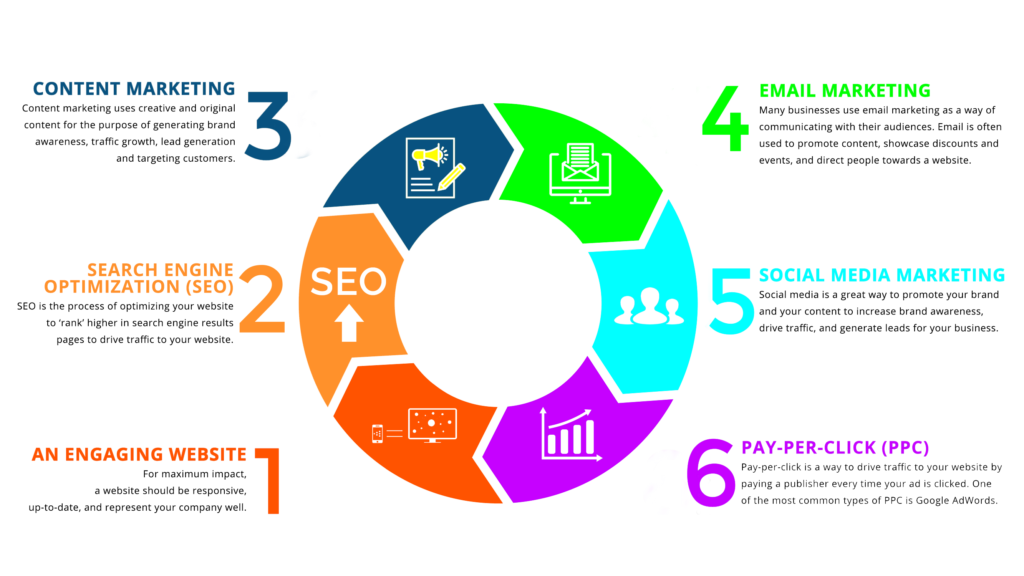
Learn how to create your digital marketing strategy now:
1. Determine your digital marketing goals
Before you start writing content or launching ad campaigns, stop and think about your goals. What do you want to accomplish with online marketing or specific digital marketing techniques? Do you want to generate more leads with
a PPC campaign, for instance? Or, do you want to increase and improve the quality of website traffic?
As you brainstorm your goals, think about your company’s overall goals too. You may want to increase your social media followers on Facebook, for instance, but your business wants to drive more purchases. You can relate
these two goals by building a social media strategy that focuses on increasing sales by generating an active online following on Facebook.
No matter what goals you choose, make them S.M.A.R.T., which stands for:
- Specific
- Measurable
- Attainable
- Relevant
- Timely
As an example, you might create the following S.M.A.R.T. goals:
Reach 500 social media followers on Facebook in six months
Achieve an 8% website conversion rate in 12 months
Attract 35 qualified leads with PPC by January 1, 2021
If you decide to partner with a digital marketing agency for online marketing, they can help you create S.M.A.R.T. goals. It’s helpful, however, if you come to them with ideas for what you want to accomplish, like increasing sales, lead quality, or website
traffic.
2. Choose your digital marketing channels
In coordination with developing web marketing goals, you should also decide which digital marketing techniques or channels you want to use. An omni-channel approach, which uses multiple channels, performs best because it reaches
users across email, search, social media, and more.
Some of the most valuable types of digital marketing include:
- SEO
- Content marketing
- Email marketing
- Social media
- PPC
With these strategies, your company can accomplish a range of goals, from generating website traffic and brand awareness to increasing lead generation and purchases. Plus, these techniques, like SEO and PPC, work well together.
3. Set your digital marketing budget
Once you determine your goals and preferred digital marketing tactics, you can set your budget. For reference, most SMBs dedicate $2500 to $12,000 per month into online marketing. Depending on your company, strategy, and resources,
you may invest a different amount. Either way, it’s crucial to have a realistic budget.
Setting an unrealistic budget, for instance, can result in your business wasting money because you didn’t provide enough of an investment to support a strategy fully. Settling for cheap SEO (think $100 a month) is an excellent
example because your company pays for a service without getting any results. Take the time to research your costs and strategy so you can receive a realistic marketing budget.
4. Develop your digital marketing strategy
Next, start building your online marketing strategy. As you develop your strategy, you want to think about your target audience. How can you reach users with the techniques you’ve selected, as well as accomplish your goals? Not
to mention, how will you divide your digital marketing budget between your tactics?
You’ll also need to think about how you will assign and accomplish tasks. If you’re working with a team, for instance, you will need to
outline what tasks need accomplished, who will accomplish them, and when they will accomplish them. Building a dedicated marketing calendar can help you streamline and track your progress. This step plays a critical part in
your digital marketing strategy’s foundation, so don’t skip it!
5. Launch your digital marketing strategy
Once you’ve developed your approach, you can move forward with launching it.
Depending on your chosen digital marketing techniques, your launch may include posting your first blog post, launching your first ad campaign, or creating your social media profiles. Online marketing isn’t a once-and-done
strategy, so your launch date is only the beginning of your efforts.
If you’re starting an ad campaign, keep an eye on your ads. You want to make sure they comply with the ad network’s rules and standards. If they don’t, the networks won’t deliver your advertisements. Monitoring these ads
closely, however, can help you act fast with fixing any problems.
6. Monitor your digital marketing campaigns
Following the start of your online marketing strategy, you want to monitor each tactic’s performance. For example, if you launched a social media ad campaign, you want to watch impressions, clicks, and CTR. In comparison, if you
started an SEO strategy, you want to monitor your rankings and website traffic over the next few months.
A proactive approach to monitoring your digital marketing can help you spot and fix issues fast. Your speedy response time can improve the cost-effectiveness of your strategy because you reduce wasted ad spend or poor
keyword targeting. As you track your campaigns, watch for trends and potential areas of improvement.
7. Implement digital marketing campaign improvements
Your close monitoring and tracking in the previous step can lead to tremendous gains in the long-term performance of your digital marketing campaigns. That’s why it’s essential for your digital marketing to focus on continuous
improvements. For example, if you notice that location-based keywords perform well for your SEO strategy, you may focus on that tactic more. Or, that your social media ads on Facebook outperform those on Instagram, leading
to a more significant Facebook ad spend.
On a routine basis, look at your digital marketing techniques and find areas for improvement. This proactive approach will not only help improve your strategy but also help your business get ahead of competitors that don’t
take the time to analyze their tactics. For your company, that can mean more leads, sales, and market share.
8. Measure your digital marketing ROI
Throughout your online marketing strategy, you want to measure its performance, results, and ROI. Understanding how your strategy performs and how it helps your business can help you increase digital marketing support from business
leaders. With more support, you can scale your plan and increase your investment, which can lead to even bigger results.
You can measure your digital marketing ROI by looking at the revenue generated by online marketing, minus its costs. Of course, you’ll need to consider some hard-to-measure revenue points, like the value of brand awareness
or an active social media following.
In some cases, it’s helpful to determine the worth of hard-to-measure data points, like brand awareness, before launching your campaign. That way, you and your company’s decision-makers have an agreement on the worth and
value of brand awareness, social media follows, and other factors.
Digital marketing services: What are they, and should you use them?
You’ve learned about how to do digital marketing, as well as the types of digital marketing, and (as you can tell) there is a lot that goes into online marketing. The time and skill required is one reason why many companies invest
in digital marketing services.
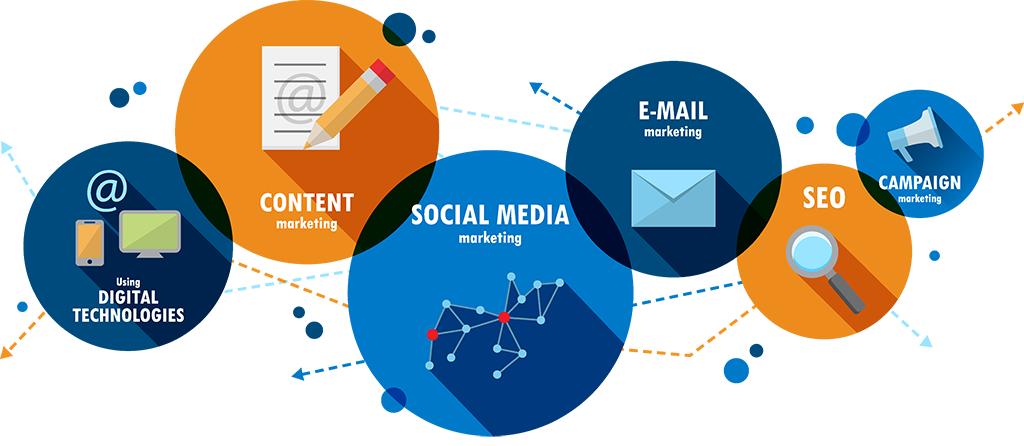
If you have questions about online marketing services, keep reading for answers!
What are digital marketing services?
Digital marketing services are professional services that market your business, brand, products, or services online. In most cases, you can customize online marketing services to include the strategies you want, though some agencies
offer digital marketing packages.
For the best results with digital marketing services, choose a provider that customizes their packages to your company’s needs. If you’re a local business, for example, you probably want online marketing services that
include not only SEO but also local SEO.
Generally, online marketing services get provided on a routine basis versus a one-time basis. If you’re looking to work with a digital marketing agency on a consulting basis or for a one-off project, however, you can usually
find them.
What do digital marketing services include?
Every online marketing service, as well as Internet marketing agency, is different.
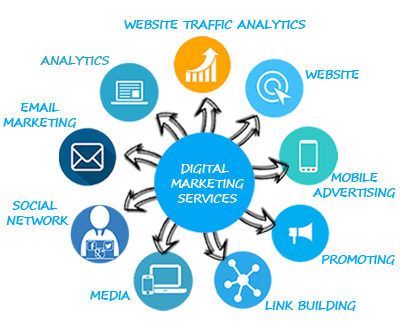
For the best results with digital marketing services, you should invest in services that include:
Custom strategy
Dedicated account manager
Regular reporting
Upfront pricing
If you’re curious, our services include these four features, plus some additional perks for our clients.
Should I use digital marketing services?
Before researching service providers, requesting quotes, and scheduling meetings, make sure that online marketing services are the best option for your business. This proactive step will not only save you time but also help
you determine what you need or want in a digital marketing agency.
Determine if you need online marketing services by answering these questions:
What strategies do I want to use?
What resources will I need to use these strategies?
How much time will I need to dedicate to these strategies?
Do I have the in-house resources (including time) to use these strategies?
If you find that you don’t have the time, resources, or skill to use the digital marketing techniques that you want to, like SEO or CRO, then it’s worth considering an online marketing agency. An agency can help you
take advantage of these strategies without consuming your time or energy.
How much do digital marketing services cost?
Prices for digital marketing services depend on several factors, including:
Number of services
Aggressiveness of strategy
Complexity of strategy
Agency size, experience, and capabilities
Generally, however, SMBs invest $2500 to $12,000 per month into online marketing, including for professional services. Your business may dedicate a different amount depending on your needs and goals. For the most accurate
price, request a quote from the agencies you’d like to work with and hire.
How do I find a digital marketing agency?
You can find dozens of digital marketing agencies with a search on Google, but finding the perfect one for your business takes work. You need to determine your budget, research your options, meet your potential partner, and
more to find the best agency for your company.
Get started on your search by following these steps:
Brainstorm some digital marketing goals
Choose a few preferred web marketing strategies
Determine an online marketing budget
Compile a list of potential agencies by searching online and asking colleagues
Review each agency’s prices, services, and what their services include
Explore each agency’s case studies, testimonials, and reviews
Request a custom quote or proposal from each agency
Meet with the agency and ask questions about their approach, results, and background
These initial steps can help you build a vetted list of digital marketing companies to work with, which can save you from signing
with an agency that will underdeliver when it comes to results. Plus, you’ll learn how much you want to invest and what you want to accomplish with online marketing.


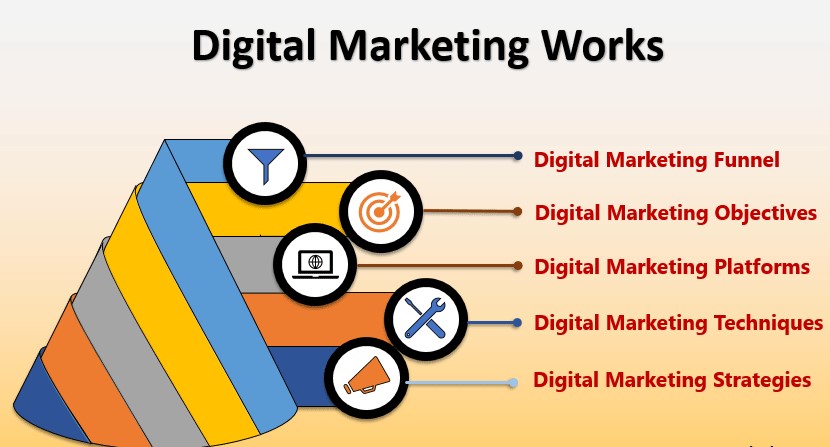



















 Home
Home